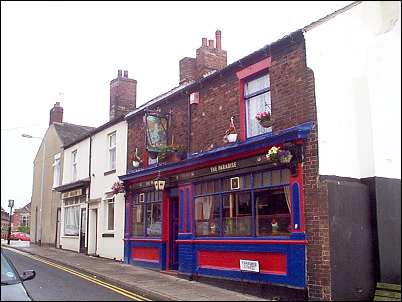The land behind Tower Square was
laid out by the Tunstall Building Society.
John Ward in his book on Stoke
(1843) described the society:.....
"A Building Society, begun
in 1816. and of which many of the working Potters were members,
gave rise to forty small houses, and the formation of two new
streets, called Paradise Street, and Piccadilly, extending from
the market-place westwardly."
The society acquired land from the
Sneyd family in the early 1820s and the houses were built between
1821 and 1823.
The houses built of brick and tile
with sash windows and separate yards with privies and ashpits were
far superior to the cottages in which most of the inhabitants of the
town lived in the early 1820s.
The amount of the subscription
precluded most "working potters" from becoming members and an
analysis of the 1839 tithe award for the parish of Wolstanton shows
that the most of them were owned by local tradesmen and skilled
workmen and let out for rent.
The owners included Joseph Capper,
the blacksmith, a later noted Chartist. The houses set the standard
which was adopted for the hundreds of similar terrace houses which
were constructed in the the adjacent streets. Virtually all the
houses have been demolished. Two however have survived in Paradise
Street as the Paradise Inn.

![]()
![]()
![]()